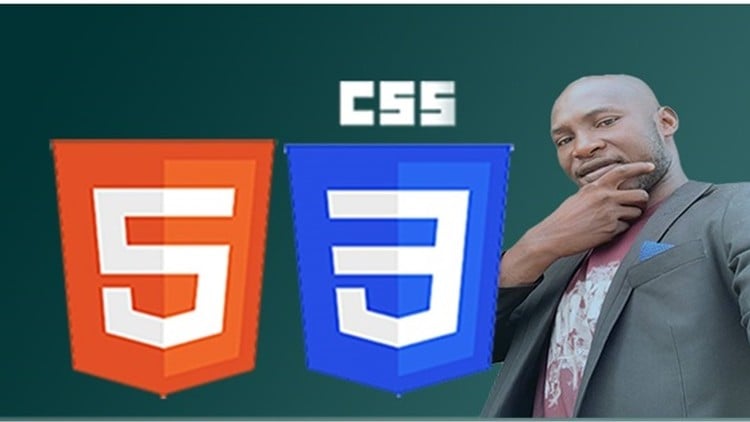Complete HTML and CSS with SCSS course ( 2 projects)
- Description
- Curriculum
- FAQ
- Reviews
This course is designed to introduce beginners to the fundamental concepts and techniques of web development using HTML (HyperText Markup Language) and CSS (Cascading Style Sheets). It will equip students with the skills necessary to create and style visually appealing and fully functional websites. Through a hands-on, project-based approach, this course will guide learners through the process of building structured web pages and applying various design elements. By the end of the course, students will be able to develop basic websites, style them effectively, and understand the underlying technologies that drive web design.
Key Topics Covered:
Introduction to HTML:
Structure and syntax of HTML Common HTML elements (headings, paragraphs, links, images, etc.) HTML document structure (DOCTYPE, <html>, <head>, <body>) Lists, tables, and forms Embedding media (audio, video, iframes) HTML semantic tags (header, footer, article, section, etc.)
Introduction to CSS:
Basics of CSS syntax (selectors, properties, values) Inline, internal, and external CSS Color properties and text formatting (font-family, font-size, etc.) Box model (margins, padding, borders, content area) Styling links, buttons, and other interactive elements CSS positioning (static, relative, absolute, fixed) CSS layout techniques (Flexbox and Grid) Advanced CSS Concepts: Responsive web design (media queries) CSS transitions and animations Customizing typography and images (web-safe fonts, image optimization) Web Accessibility and Best Practices.
Writing clean and semantic HTML for improved accessibility CSS best practices and optimization Mobile-first design principles Practical Applications and Projects: Creating simple landing pages Building a personal portfolio website Designing responsive websites that adapt to various screen sizes Debugging and troubleshooting common issues Learning Outcomes: By the end of this course, students will:
– Understand how to structure a website using HTML.
– Be proficient in applying styling and layout techniques with CSS.
– Be able to create responsive web pages that work across devices.
– Understand best practices for clean, maintainable code.
– Develop the foundational skills needed for more advanced web development topics.
Prerequisites:
No prior experience in web development is required. This course is perfect for beginners. Course Delivery: Interactive lessons with practical coding exercises Projects and assignments to build real-world applications Quizzes and reviews to reinforce key concepts Tools and Resources: Text editor ( Visual Studio Code) Web browsers (Chrome, Firefox, etc.) for testing Access to online resources and community forums for support This course provides a strong foundation for anyone looking to pursue a career in web development or for those interested in learning how to create their own websites. Whether you are looking to build personal projects or develop professional web applications, the skills acquired in this course will be invaluable.
-
1714 embedding audio and video on a web pageVideo lesson
-
1815 anchor state soudo classVideo lesson
-
1916 anchor soudo elementVideo lesson
-
2017 external styling linkageVideo lesson
-
21First practice chanllengeQuiz
1. Create a folder on your desktop
2. Open the folder with visual studio code editor or any related editor
3. Create a file and name the file index.html
4. Use exclamation mark to generate html boiler plate
5. Color the body with brown background by using inline css styling
6. Insert image into the page
7. Create heading (h3) and paragraph
-
22First ChallengesVideo lesson
-
2319 part 1 css colorVideo lesson
-
2420 part 2 css colorVideo lesson
-
2521 backgroundVideo lesson
-
2622 borderVideo lesson
-
2723 marginVideo lesson
-
2824 paddingVideo lesson
-
2925 css height and widthVideo lesson
-
3026 css box modelVideo lesson
-
3127 outline and outline offsetVideo lesson
-
3228 formatting text (text and box shadow)Video lesson
-
3329 css order and unorder listVideo lesson
-
3430 positioningVideo lesson
-
3531 float layoutVideo lesson
-
3632 css combinators (selection)Video lesson
-
3733 opacity and transparencyVideo lesson
-
3834 part 1 second challengesVideo lesson
-
3935 part 2 second challengesVideo lesson
-
4036 part 1 css unitsVideo lesson
-
4137 part 2 css unitsVideo lesson
-
4238 specificityVideo lesson
-
4339 math functions and linear-gradientVideo lesson
-
4440 radial-gradientVideo lesson
-
4541 transition propertyVideo lesson
-
4642 animation propertyVideo lesson
-
4743 2D and 3D transformationVideo lesson
-
4844 tooltipsVideo lesson
-
4945 multiple columns, variable and box-sizingVideo lesson
-
5046 part 1 css formVideo lesson
-
5147 part 2 css formVideo lesson
-
5248 round-up css formVideo lesson
-
5349 media queryVideo lesson
-
5450 introduction to sassVideo lesson
-
5551 sass partial and mixinsVideo lesson
-
5652 introduction to flexboxVideo lesson
-
5753 part 1 flexboxVideo lesson
-
5854 part 2 flexboxVideo lesson
-
5955 flexbox third challenge part 1Video lesson
-
6056 flexbox third challenge part 2Video lesson
-
6157 introduction to grid layoutVideo lesson
-
6258 grid layout part 1Video lesson
-
6359 grid layout part 2Video lesson
-
6662 project one overviewVideo lesson
-
6763 resetting browser for page layoutVideo lesson
-
6864 creating navigation barVideo lesson
-
6965 wrap up navigation barVideo lesson
-
7066 applying background image to the home navbarVideo lesson
-
7167 wrapping up home sectionVideo lesson
-
7268 organizing filesVideo lesson
-
7369 service section heading and backgroundVideo lesson
-
7470 background overlayVideo lesson
-
7571 wrapper service card part 1Video lesson
-
7672 wrapper service card part 2Video lesson
-
7773 roundup of service card part 3Video lesson
-
7874 building up gallery sectionVideo lesson
-
7975 gallery grids layoutVideo lesson
-
8076 setting up data lightboxVideo lesson
-
8177 finalizing data lightboxVideo lesson
-
8278 about heading sectionVideo lesson
-
8379 about section part 1Video lesson
-
8480 about section part 2Video lesson
-
8581 about section part 3Video lesson

External Links May Contain Affiliate Links read more





